President Donald Trump, in keeping with one of his major campaign promises of 2016-17, levied a 25% tariff on foreign steel (and aluminum) producers importing products into the US. Trump, as has been the case for every US president since Lyndon Johnson, has tried to protect domestic steel makers. Past presidents have failed, leading to six decades of mass layoffs, plant shutdowns, and declines in production. Trump’s tariff will also fail. Trump’s tariff is an economic and political disaster for US economy and the global trading system.
The Trouble with US Steel
Following World War II, US steel, once a global industrial powerhouse, began a downward spiral from which it has never recovered.
Who is to blame? Those who built the US steel industry—management, labor and investors—also destroyed it. The US government, in attempting to help steel, contributed to its demise!
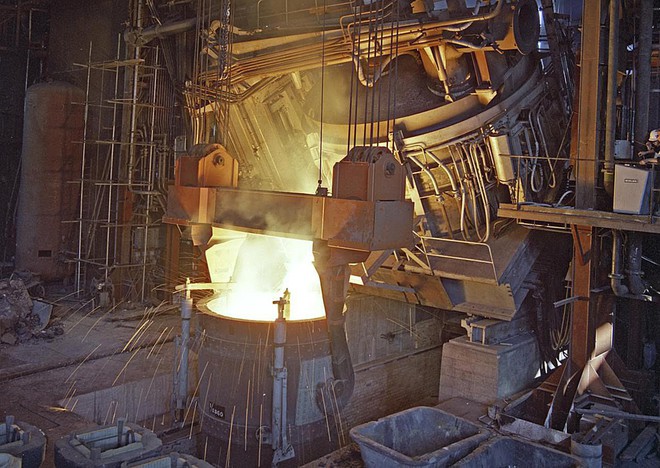
From the late 1800s when America enjoyed global dominance in steel markets, US Steel Corporation—the largest steel company—would set a price for steel, then the rest of US steel companies would set a similar price. Because global competition in steel was weak, and US domestic steel makers saw no need to compete, they simply sat back and raked in the profits.
Steel companies soon figured out that they could make even larger profits if they did not reinvest in making their steel mills more efficient. So, US steel companies allowed their mills to deteriorate often beyond repair. Innovation in the industry died. Consider steel plants in the Youngstown, Ohio, area—the cradle of global steel production for decades. Steel mills, built in the late 1800s, were still in operation in the 1970s.
The unionized steelworker labor force, not to be left out, demanded and received generous wages and benefits, eventually becoming the highest paid industrial workers in America. Over time, labor costs made the industry uncompetitive. Worse yet, when the steel mills began to shut down in the late 1970s, potential buyers were scared away by retired worker "legacy costs" of pensions and health benefits and laid off worker’s severance pay.
In 2002, there were 600,000 retired steelworkers whose benefits increased steel prices by 5% to 10%. In one company—LTV Steel—alone, it owed some 82,000 retired workers compensation of $46,000 annually. LTV was short $2.2 billion to make the payments, so the US government had to pay worker pensions.
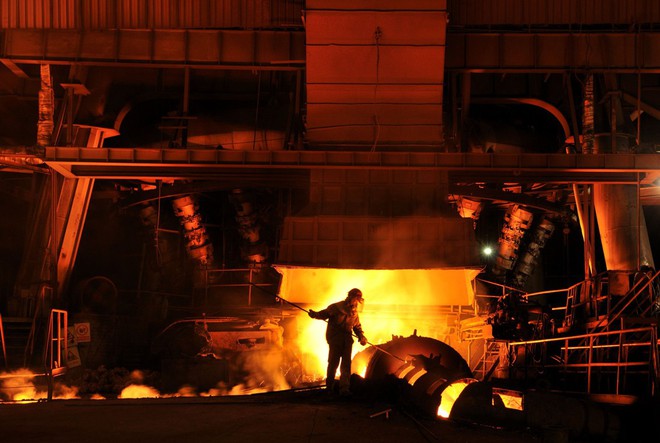
In many steel producing regions, the steel industry and its workforce controlled the local labor force and the political system. In Youngstown, for example, steel companies even controlled what businesses would be allowed to locate there. General Motors, which now has a large automobile plant in the region, had to buy land for its massive operation in secret out of fear that steelworkers would block the business. Ironically, although GM was only a few miles from major steel producers, it was cheaper for GM to purchase its steel from steel mills in Japan.
Steelworkers were a major political force, one that would resort to violence. In 1916, steelworkers in Youngstown burned down the central business district over wage disputes. In 1937, they rioted again. In 1952 during the Korean War, President Harry Truman tried to nationalize the steel industry as workers refused to produce steel for the war effort over wage disputes.
US engineering firms, seeing opportunities in post-World War II countries especially Japan and Germany, began rebuilding their steel industry using new technologies on vacant land ("Greenfield sites") created by the war’s destruction. New technologies required many fewer workers and were more efficient. "Greenfield" sites, alone, are estimated to have a 40% cost advantage over other sites ("Brownfield" sites). Consequently, US steel makers were increasingly unable to compete.
With the US demand for cheap steel on the rise and other regional markets in decline, global steel competitors began to penetrate US markets and offer high quality steel at a cheaper price. The 1997 Asian financial crisis spurred producers to look to the US to expand their markets.
But with many global competitors looking to produce more steel, in the 1990s over-capacity became a problem: more steel production but less demand. Rather than cutback on steel output, US producers contributed to over production, causing conditions for eventual shutdowns. Global steel producers began heavily subsidizing companies who became uncompetitive when they could not sell surplus steel.
The environmental movement in the US also had a major negative impact on the steel industry. The industry successfully negotiated waivers to avoid installing costly pollution abatement equipment. In the late 1970s, steel companies were no longer given waivers. Hundreds of facilities shut down because they could not absorb the antipollution costs.
The result of the behaviors above: US steelmakers—management, unions and investors—systematically put their industry out of business. The American Iron and Steel Institute reports that at in 1953 at its peak, the US employed 650,000 steelworkers. Today, the industry employs just 140,000, and that number continues to decline.
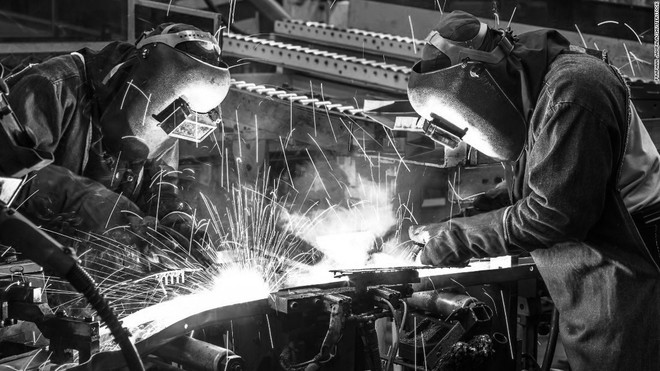
Ironically, the steel companies who originally built the industry, beginning in the 1980s, made their money from non-steel investments. Bethlehem Steel, once number 8 on the Fortune 500 list of largest companies, in the 1990s made its money from real estate sales of its abandoned industrial sites. It even went so far as to purchase Marathon Oil, a large energy company.
Rebuilding the obsolete US steel industry proved too costly. The old blast furnaces which made steel for over one hundred years gave way to smaller companies employing many fewer workers using state-of-the art and environmentally-friendly technology. The new companies do not make steel any longer; rather they reuse scrap metal.
Interested readers might consult my book, "Shutdown at Youngstown."
Government Fails to Save Steel
Every US administration, including presidents Lyndon Johnson, Richard Nixon, Jimmy Carter, Ronald Reagan, George H. W. Bush, Bill Clinton, George W. Bush, Barack Obama, and now Donald Trump has tried and failed to save the steel industry. Each administration offered some combination of tariffs—a tax on steel imports paid by American industry and consumers—or price controls—setting prices on steel imports that do not undercut US producers, along with attempts through the World Trade Organization (WTO) to penalize global steel producers who unfairly subsidize steel costs. The US also engages in bilateral negotiations to compel countries to voluntarily reduce steel imports to the US.
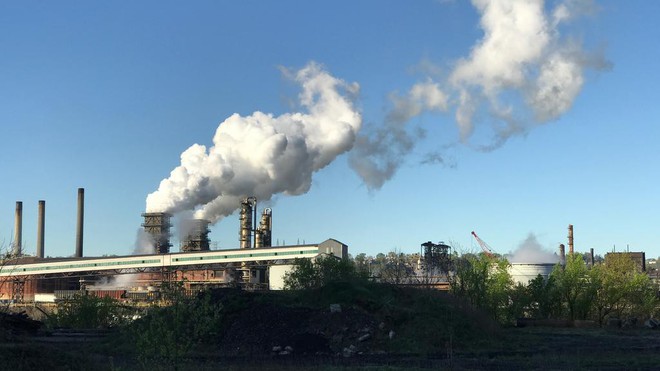
None of these public policy interventions worked. Bill Clinton tried to more rigorously enforce trade laws and stepped up complaints against countries illegally "dumping" steel at subsidized costs in the US. He created a low interest rate loan program for steel companies. All of these failed.
George W. Bush, in 2002, imposed tariffs on steel imports between 8% to 30%. Two years later, the tariffs were abandoned. Each steelworker job "saved" cost taxpayers from $400,000 to $565,000 per job, according to the non-partisan Peterson Institute. An estimated 200,000 workers in industries using steel lost their jobs, including $4 billion in lost wages. Steel prices also increased 15%.
Barack Obama, fearing unfair Chinese competition in US markets, imposed a 522% tariff on steel used in automobile imports in 2016. The result dropped Chinese imports by two-thirds and decreased their US market share to just 2%.
For some reason, Trump is justifying tariffs to punish Chinese steel producers who are competing unfairly. But the Chinese were already transitioning out of the US in favor of other regions and their own domestic markets.
Trump’s Steel Tariff a Mistake
Trump’s steel tariff is likely a huge mistake, economically and politically.
As noted above, steel tariff’s, and other interventions, are economically unsound. They reward an inefficient industry at the expense of a much larger, more productive collection of diverse industries. This has been the case for more than six decades of failure. The definition of "insanity is doing the same thing over and over again and expecting a different result."
Trump’s advisors figured that they could not make much of a case for steel tariffs in the WTO based on dumping, so they have opted for a "national security" approach which is allowed by WTO. In support of this option, Trump’s Department of Commerce miraculously issued a report finding that steel imports were threatening national security.
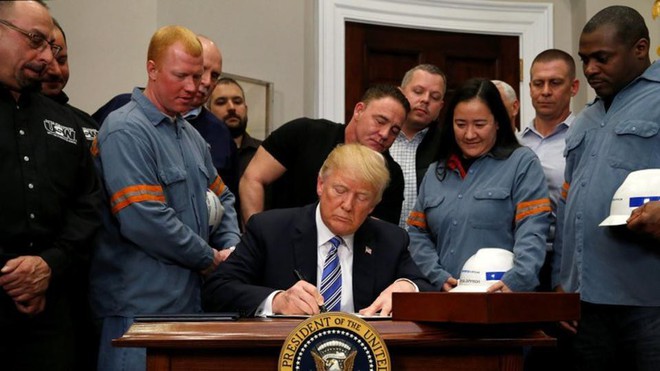
Ảnh: REUTERS
Wilbur Ross, Secretary of Commerce, interestingly, was a major investor in the steel industry: he bought up failing US steel companies then sold them to the Indian steelmaker, Lakshmi Mittal. Ross made the deal profitable by not paying for the environmental damage caused by the steel companies and not paying retired workers their pensions. According to Intercept Magazine, Ross was able to stick the US taxpayer for hundreds of millions of dollars. So Ross, after profiting from selling off steelmakers to foreign entities, is now trying to save them even though they are bad investments. Shouldn’t Ross know better than this?
Why national security? If China stopped exporting steel to the US, so the scenario goes, China could militarily defeat the US because it could not produce steel for defense. But Secretary of Defense James Mattis informed Trump that the defense industry only consumes 3% of US steel, so there is no national security concern. Undaunted, Trump advisors expanded the definition of national security to include all types of infrastructure: transportation, electrical grid, water systems, and the like. In essence, everything made from steel is a national security interest.
Several things are terribly wrong here. First, national security has only been invoked once in the past three decades, so is a rare occurrence. Also, national security is not generally so broadly defined. Employing it now makes Trump’s policy justification look like a concocted effort. Experts worry that Trump’s lame efforts might embolden other countries to employ similar excuses to apply tariffs.
Second, steel is provided by long-time US allies, particularly Canada, Australia, Japan and others. They are not likely to withhold steel exported to the US. Canada, for example, sells 90% of the steel it produces to the US and Canada is the largest supplier at 16%. More importantly, Trump fails to see the intricacies of the "global supply chain." Canadians make cars for US auto companies which are shipped to the US. There, US steel parts are added and the cars are shipped back. Car parts go back and forth several times between the Canadian and US border. The same is true in Mexico.
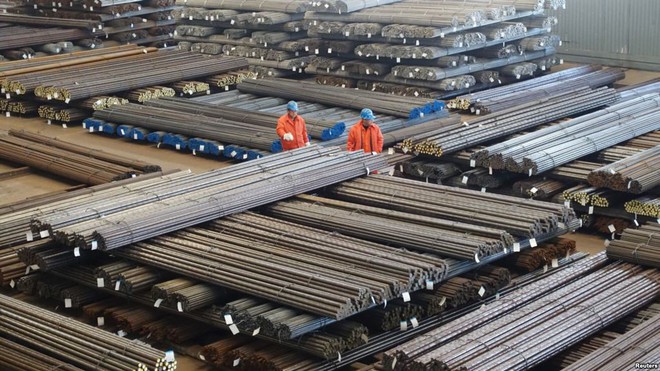
Third, Trump’s steel tariff manages to insult some 110 countries that ship steel to the US. Many of them, the EU, China, Brazil and others are now devising strategies to penalize the US for this action. Trump has said that "trade wars are easy to win." He’s about to find out. Trump’s action also violates the spirit of WTO. Trump is forcing countries to plead with him to take their industries off the tariff list. WTO was set up in part to eliminate this by issuing a set of rules that countries would all abide by.
Trump seems to be saying, "Let the trade wars begin."
Strange Politics
The Trump presidency has ushered in the strangest of politics around trade (and probably everything else). Democrats and Republicans, liberals and conservatives seem totally confused.
In his last two years as president, Obama promoted free trade as one of his legacy policies. When it came to approving the Trans-Pacific Partnership free trade agreement, Republicans supported Obama by passing critical trade legislation that allowed a president to approve trade deals without much congressional interference. Democrats were opposed to TPP, so it was not enacted.
Images: Evan Vucci
Trump was elected president on a platform of anti-trade. Trump joined Democrat candidates Hillary Clinton and Bernie Sanders in killing TPP in 2016. Earlier as Secretary of State under Obama, Clinton claimed ownership of TPP and promoted it as the "gold standard" of trade agreements. Before Obama and Clinton, Republican President Bush had initially developing TPP in 2008. In January 2018, Trump stated that he would reconsider TPP if the US got a better deal, seemingly reversing his position.
Trump is now trying to unravel the North American Free Trade Agreement between the US, Canada and Mexico. Steel tariffs applied to Canada and Mexico were intended to help nullify the agreement.
But, Republicans rallied against the tariffs and Trump exempted Canada and Mexico. Ironically, NAFTA was signed into law in 1994 by Democrat President Bill Clinton with bipartisan support. Republican President George H.W. Bush had led the development of NAFTA. Now President Clinton has been rejecting his signature Treaty.
Republicans are divided on whether to support Trump’s steel tariff. Trump’s Chief Economic Advisor Gary Cohn, a leader in developing tax reform legislation, just quit over the steel tariffs. Republican House and Senate leadership are opposed to tariffs. Democrats, for their part, either support Trump on tariffs or are silent.
Trade has long been the foundation of US global power. At present, trade is the means for ensuring a balance of power between rapidly emerging Chinese global ambitions and the US traditional global role. Politics is so screwed up in the US now, and has been for some time, that world leaders have no idea what the US stands for and what its policies are. This can only end badly.
* For Vietnamese version, click here.
